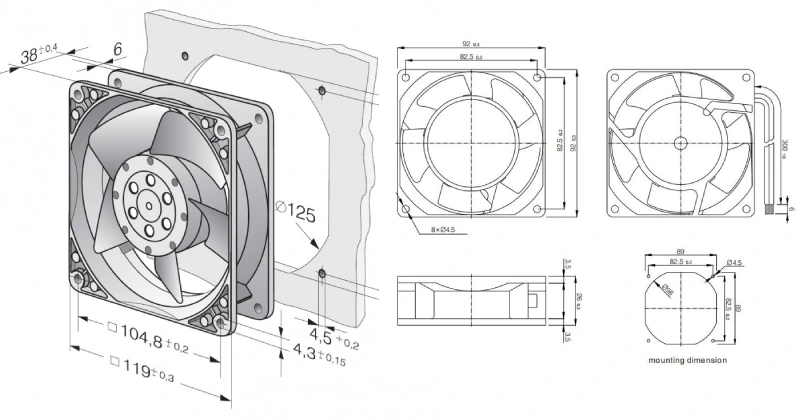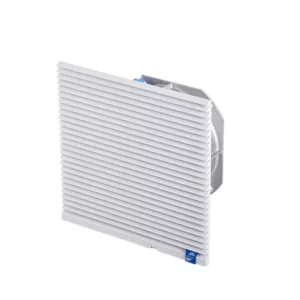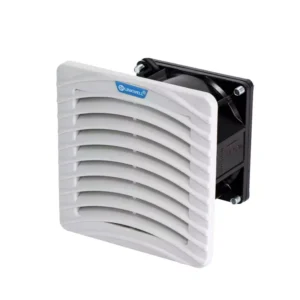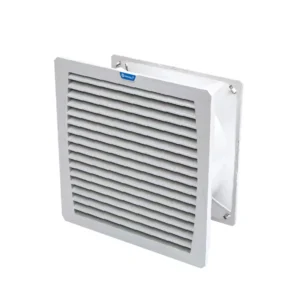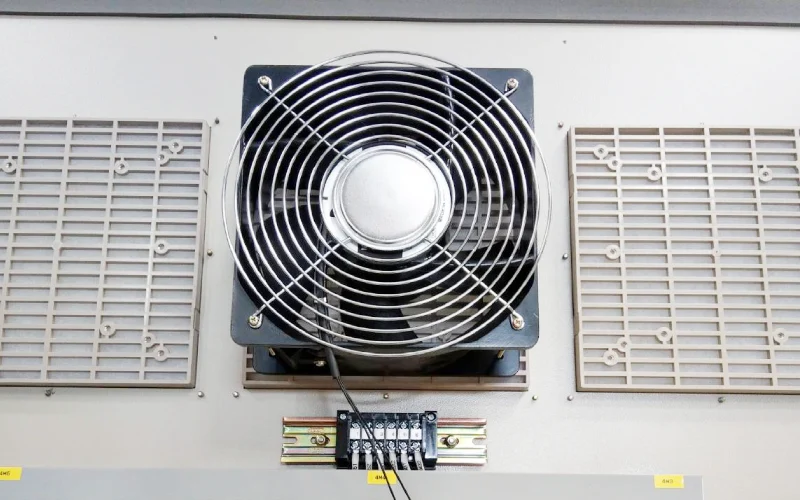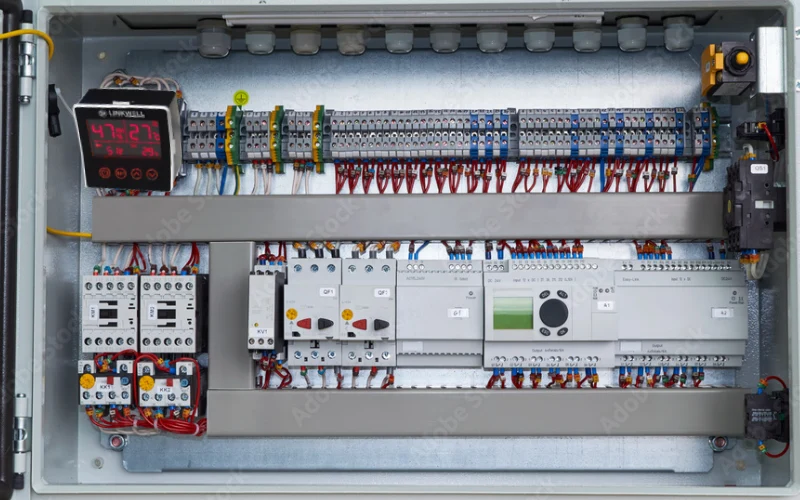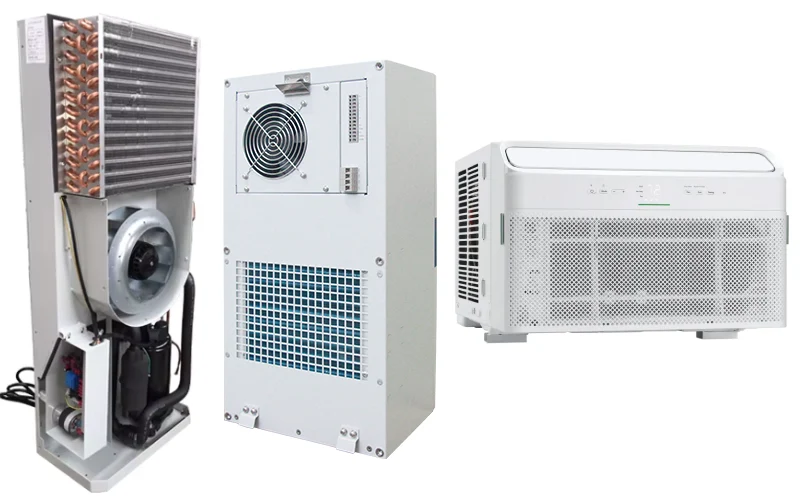You know how hot and stuffy it can get in big factories or server rooms? Airflow Through an Axial Fan Is: The Key to Efficient Ventilation. When you use efficient airflow, you keep things cool, save money, and protect your equipment. Take a look at how this works:
| Benefit | Explanation |
|---|---|
| Lower energy bills | Fans run at different speeds, so you use less energy when full cooling isn’t needed. |
| Longer equipment life | Keeping the right temperature stops overheating and breakdowns. |
| Fewer breakdowns | Good cooling means equipment lasts longer and works better. |
Linkwell offers reliable axial fan solutions to help you get the best results for your ventilation needs.
Key Takeaways
- Efficient airflow through axial fans lowers energy bills by adjusting fan speed based on cooling needs.
- Proper airflow prevents overheating, extending the life of your equipment and reducing breakdowns.
- Regular maintenance, like cleaning filters, keeps your ventilation system running smoothly and efficiently.
- Linkwell’s axial fans offer customizable options to fit specific needs, ensuring optimal performance in various environments.
- Choosing the right fan involves considering airflow requirements, noise levels, and installation space for the best results.
Efficient Airflow in Axial Fan Ventilation
How Airflow Drives Ventilation
When you walk into a warehouse or a busy server room, you can feel the difference that good airflow makes. Efficient airflow is the backbone of any successful ventilation system. It keeps the air moving, pushes out heat, and brings in fresh air. This is especially important in places where machines run all day or where people work in tight spaces.
Axial fans play a big part in this process. They pull air in along their axis and push it out in the same direction. The spinning blades create a pressure difference, which moves large amounts of air quickly. This design works best in big, open spaces like factories or data centers, where you need to move a lot of air over a short distance.
Here’s a quick look at what makes airflow efficient in an axial fan ventilation system:
| Factor | Description |
|---|---|
| Fan Design | The size and angle of the blades make sure air moves evenly and fits your needs. |
| Airflow Requirements | You need to balance airflow and pressure for the best results. |
| Fan Speed | The right speed keeps things running smoothly—too fast or too slow can cause problems. |
| System Resistance | Good duct design lowers resistance and helps the fan work better. |
| Installation Quality | Proper setup stops vibration and keeps everything balanced. |
| Routine Maintenance | Regular cleaning and checks keep the system efficient and long-lasting. |
| Motor Efficiency | Energy-saving motors help you cut down on power bills. |
| Environmental Conditions | Temperature and humidity can change how well your fan works. |
| Air Leaks | Sealing up leaks boosts efficiency and saves money. |
| Load Variation | Automated controls adjust airflow as your needs change. |
You can see that every part of the system matters. If you miss one, you might end up with poor airflow or wasted energy.
Linkwell Axial Fan Performance
Now, let’s talk about how Linkwell’s axial fans stand out. You want a fan that not only moves air but does it efficiently, quietly, and reliably. Linkwell’s fans deliver powerful airflow, which means they keep your equipment cool and your workspace comfortable. They use energy-saving motors, so you get strong performance without high energy bills.
Here’s how Linkwell’s fan performance compares to others:
| Feature | Linkwell Axial Fans | Competitors’ Fans |
|---|---|---|
| Peak Airflow | Up to 70,000 CFM | Usually lower |
| Energy Efficiency | 20% less energy use | Higher energy consumption |
| Noise Level | Reduced draft noise | Typically louder |
| Durability | Fiberglass, epoxy-coated | Often less durable |
You can count on Linkwell fans to work in tough environments. They handle heat, dust, and humidity without missing a beat. The fans also run quietly, which makes a big difference if you spend a lot of time near them.
Let’s look at some real-world benefits you get with Linkwell’s axial fans:
- You maintain comfortable temperatures in factories and warehouses.
- You improve indoor air quality, which helps keep workers safe and comfortable.
- You prevent hot and stuffy conditions by keeping air in motion.
- You save on energy costs thanks to efficient motors.
- You enjoy a quieter workspace with low-noise operation.
If you need a fan for a specific job, Linkwell offers a range of options. You can choose the right size, airflow, and features for your application. Whether you’re cooling a control panel, a telecom cabinet, or a computer chassis, you’ll find a solution that fits.
Axial Fan Design and Components
Recommended products
Blade and Motor Efficiency
When you look at a fan design, you might notice the shape and number of blades. These details matter more than you think. The shape of the blades, called the airfoil, helps move air smoothly and quickly. If you use three or four blades, you get more airflow and less pressure, which works well when you don’t have many airflow restrictions. If you need higher pressure, like in a tight cabinet, five to seven blades can help, but they might lower the total airflow. The angle of the blades also changes how much air the fan moves. You can see how a small change in fan design can make a big difference in performance.
The motor is just as important. High-efficiency motors turn more electricity into airflow, so you waste less energy. This means your ventilation system uses less power and saves you money. Linkwell gives you options for size, voltage, and material, so you can pick what fits your needs best. For example, you can choose from 5V, 12V, 24V, or 48V motors and sizes from 20mm to 172mm.
Housing and Filter Features
The housing and filters do more than just hold the fan together. They protect your equipment and keep the air clean. Filters catch dust and debris, which helps your fan last longer and keeps your workspace healthier. Clean filters also mean the fan doesn’t have to work as hard, so you use less energy.
Here’s a quick look at what good housing and filters can do for you:
| Benefit | Description |
|---|---|
| Enhanced Air Quality | Filters trap dust and particles, giving you cleaner air. |
| Equipment Protection | Stops debris from getting inside, so your fan lasts longer. |
| Energy Efficiency | Clean filters keep airflow strong, lowering energy use. |
| Easy Maintenance | You can replace or clean filters quickly, saving time and money. |
Linkwell’s fans come with high IP ratings, like IP65 and IP68, so you don’t have to worry about dust or water. You also get low noise levels and easy installation, making your job easier. If you want a fan design that fits your exact needs, Linkwell lets you customize the size, voltage, and even the materials, like PBT plastic blades or aluminum frames.
Applications of Axial Fans for Ventilation
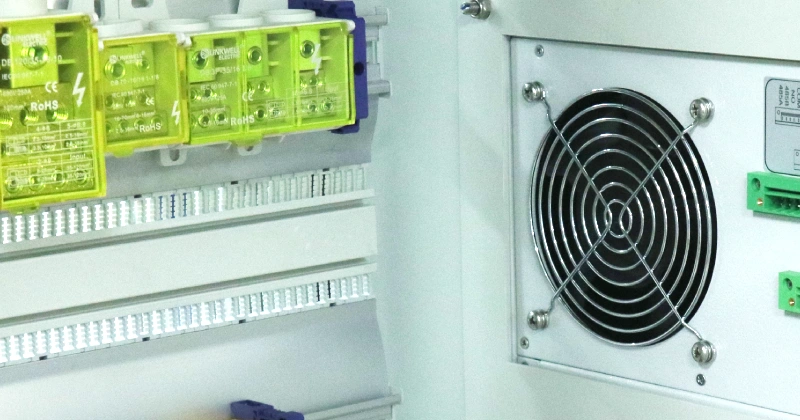
Industrial and Electrical Enclosure Solutions
You see axial fans everywhere in industry. These fans keep air moving in places like HVAC systems, factories, and electrical cabinets. You might notice them in power plants, mining tunnels, or even large commercial buildings. Axial fans help with ventilation by pulling in fresh air and pushing out hot air, which keeps equipment safe and workers comfortable.
Here are some common places where you’ll find axial fans working hard:
- HVAC systems for air circulation in buildings
- Industrial ventilation to remove dust and fumes
- Electrical enclosures and control panels to prevent overheating
- Exhaust systems in manufacturing plants and kitchens
- Cooling electronic equipment like servers and telecom cabinets
When you use a cooling fan in an electrical enclosure, you protect sensitive electronics. The fan regulates temperature, stops overheating, and helps your equipment last longer. Linkwell’s product lines, such as fan filter units and cabinet air conditioners, give you reliable ventilation. These solutions use smart controls and energy-efficient fans to keep costs down and uptime high.
Here’s a quick look at where Linkwell’s axial fans fit in:
| Sector / Application Area | Examples of Use Cases |
|---|---|
| Industrial ventilation | Factory cooling, plant ventilation |
| Electrical enclosures | Panel cooling, telecom cabinets |
| Power generation | Cooling in power plants |
| Mining/tunnels | Fresh air and dust removal |
| Commercial complexes | Ventilating large spaces |
Computer Chassis Fan Uses
If you work with computers or data centers, you know how important it is to keep things cool. A cooling fan inside a computer chassis helps manage airflow and keeps temperatures steady. This is key for system reliability. When you install these fans, you move cool air through server racks and push hot air out. That keeps your equipment running at its best.
You can use compact cooling fans to target specific hot spots. Place them where you need extra airflow, like near processors or memory modules. Their flexibility lets you optimize ventilation in tight spaces.
Linkwell’s computer chassis fans offer advanced features like PWM control and ultra-low noise. These fans help you maintain the right temperature, reduce energy use, and extend the life of your equipment. You get peace of mind knowing your systems are protected.
- Targeted cooling for high-temperature components
- Flexible installation for different case sizes
- Reliable operation for long-term use
Note: Using the right cooling fan can make a big difference in how your computer or server performs.
Linkwell’s ventilation solutions work together to keep your equipment safe, cool, and reliable. You get CE-certified products that meet strict safety standards, so you can trust your system to run smoothly.
Airflow Through an Axial Fan Is: The Key to Efficient Ventilation
Energy Savings and System Longevity
You want your ventilation system to work hard without wasting energy or wearing out too soon. Airflow through an axial fan is: the key to efficient ventilation in large spaces like factories, server rooms, and manufacturing plants. When you use a high-performance fan, you get strong airflow that keeps air moving and temperatures steady.
Let’s look at why airflow through an axial fan is: the key to efficient ventilation and energy savings. Modern axial fans use smart controls and variable speeds. These features let the fan run only when needed, so you save energy and lower your bills. You don’t have to worry about fans running at full power all the time. Instead, you get just the right amount of airflow for your space.
Here’s what makes Linkwell’s axial fans stand out:
- The 630 Axial Fan delivers up to 21,600 m³/hr of airflow, perfect for big facilities.
- You get low noise, so your workspace stays comfortable.
- Durable carbon steel construction means the fan lasts longer, even in tough conditions.
- Customizable impeller pitch and materials let you match the fan to your needs.
| Feature | Description |
|---|---|
| Airflow | High airflow designed for efficient ventilation in large-scale facilities. |
| Noise Level | Engineered for low noise operation. |
| Durability | Built for durable performance in industrial and commercial applications. |
| Applications | Suitable for HVAC, manufacturing, and large-scale ventilation projects. |
When you manage airflow through an axial fan, you protect your equipment. Good airflow stops machines from overheating and keeps dust away from sensitive parts. You spend less on repairs and replacements because your system stays clean and cool.
To keep your axial HVAC fan working well, clean the blades, check alignment, inspect the motor, and lubricate bearings. These simple steps help your fan last longer and run efficiently.
You also get long-term savings. Energy-efficient axial fans use less power, which means lower operational costs. You make a smart investment up front, and you see the benefits for years.
- Reduced energy consumption lowers your bills.
- Optimized airflow and efficient motors extend equipment life.
- Fewer repairs and replacements save money over time.
Choosing the Right Linkwell Solution
Picking the right fan for your job can feel tricky, but you don’t have to guess. Airflow through an axial fan is: the key to efficient ventilation, so you want a solution that fits your space and needs. Linkwell makes it easy with a range of customizable options.
Start by thinking about these criteria:
| Criteria | Description |
|---|---|
| Operating Characteristics | Look at airflow (m³/h) and static pressure (Pa) to match your requirements. |
| Motor Type | Choose between AC motors or energy-efficient EC motors with smart controls. |
| Installation Space | Measure your available space to pick the right fan size. |
| Noise Level | Select fans with sound pressure ratings that suit your environment. |
You can also customize your Linkwell axial fan:
| Customization Aspect | Description |
|---|---|
| Size | Tailored to fit your cabinet or enclosure. |
| Airflow Capacity | Adjusted for the best performance. |
| Voltage | Matches your electrical system. |
| Blade Material | Choose for durability and efficiency. |
| Mounting Style | Flexible designs for easy installation. |
| Noise Level | Set for quiet operation. |
If you need help, Linkwell’s team is ready to support you. You get guidance on selecting the right fan, plus options for OEM and ODM customization. Whether you need a fan for a telecom cabinet, a computer chassis, or a large industrial space, Linkwell has you covered.
Linkwell stands behind every product. You get quality, reliability, and fast delivery. The company offers 24/7 support, so you never have to worry about downtime. Airflow through an axial fan is: the key to efficient ventilation, and Linkwell makes sure you get the best solution for your business.
Efficient airflow and smart axial fan design make a huge difference in keeping your equipment cool and safe. You want to look at airflow needs, fan size, noise, static pressure, energy use, blade shape, and customization options. Linkwell’s fans stand out for stable airflow, long-lasting parts, and top-notch energy efficiency.
Here’s how you can pick the best Linkwell solution:
| Step | What to Do |
|---|---|
| 1 | Check your space and airflow needs. |
| 2 | Match fan performance to your setup. |
| 3 | Think about noise and energy savings. |
| 4 | Ask Linkwell for help with custom options. |
Need help? Linkwell’s team is ready to guide you every step of the way!
FAQ
How do I know which Linkwell axial fan fits my needs?
You can check your airflow requirements, space, and noise preferences. Linkwell offers many sizes and options. If you feel unsure, just ask their team for help. They will guide you to the best choice.
How often should I clean or replace the fan filter?
You should check the filter every 3–6 months. Dusty places need more frequent cleaning or replacement. Clean filters keep airflow strong and protect your equipment.
Can I customize the fan for my project?
Yes! Linkwell lets you pick the size, voltage, airflow, and even the blade material. You can also add your logo. Just tell them what you need.
What does the IP rating mean for my fan?
The IP rating shows how well your fan resists dust and water. Higher numbers mean better protection. For example, IP65 keeps out dust and water jets. This helps your fan last longer in tough spots.

